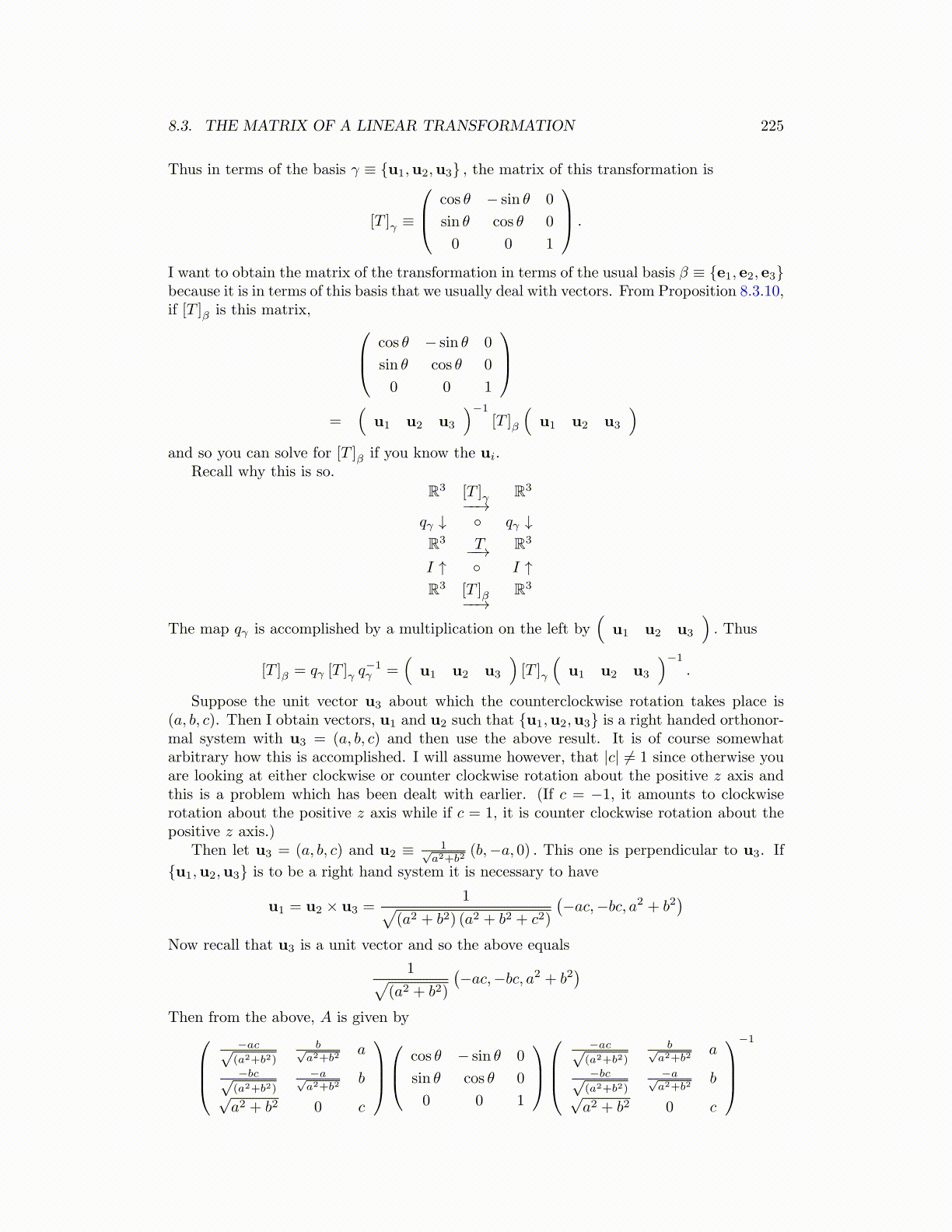
8.3. THE MATRIX OF A LINEAR TRANSFORMATION 225
Thus in terms of the basis γ ≡ {u1,u2,u3} , the matrix of this transformation is
[T ]γ ≡
cos θ − sin θ 0
sin θ cos θ 0
0 0 1
.
I want to obtain the matrix of the transformation in terms of the usual basis β ≡ {e1, e2, e3}because it is in terms of this basis that we usually deal with vectors. From Proposition 8.3.10,if [T ]β is this matrix, cos θ − sin θ 0
sin θ cos θ 0
0 0 1
=
(u1 u2 u3
)−1
[T ]β
(u1 u2 u3
)and so you can solve for [T ]β if you know the ui.
Recall why this is so.
R3 [T ]γ−−→R3
qγ ↓ ◦ qγ ↓R3 T−−→ R3
I ↑ ◦ I ↑R3 [T ]β−−→
R3
The map qγ is accomplished by a multiplication on the left by(
u1 u2 u3
). Thus
[T ]β = qγ [T ]γ q−1γ =
(u1 u2 u3
)[T ]γ
(u1 u2 u3
)−1
.
Suppose the unit vector u3 about which the counterclockwise rotation takes place is(a, b, c). Then I obtain vectors, u1 and u2 such that {u1,u2,u3} is a right handed orthonor-mal system with u3 = (a, b, c) and then use the above result. It is of course somewhatarbitrary how this is accomplished. I will assume however, that |c| ≠ 1 since otherwise youare looking at either clockwise or counter clockwise rotation about the positive z axis andthis is a problem which has been dealt with earlier. (If c = −1, it amounts to clockwiserotation about the positive z axis while if c = 1, it is counter clockwise rotation about thepositive z axis.)
Then let u3 = (a, b, c) and u2 ≡ 1√a2+b2
(b,−a, 0) . This one is perpendicular to u3. If
{u1,u2,u3} is to be a right hand system it is necessary to have
u1 = u2 × u3 =1√
(a2 + b2) (a2 + b2 + c2)
(−ac,−bc, a2 + b2
)Now recall that u3 is a unit vector and so the above equals
1√(a2 + b2)
(−ac,−bc, a2 + b2
)Then from the above, A is given by
−ac√(a2+b2)
b√a2+b2
a
−bc√(a2+b2)
−a√a2+b2
b√a2 + b2 0 c
cos θ − sin θ 0
sin θ cos θ 0
0 0 1
−ac√(a2+b2)
b√a2+b2
a
−bc√(a2+b2)
−a√a2+b2
b√a2 + b2 0 c
−1